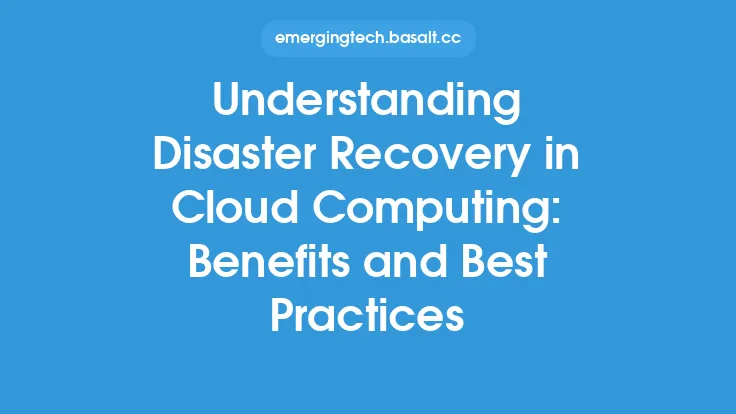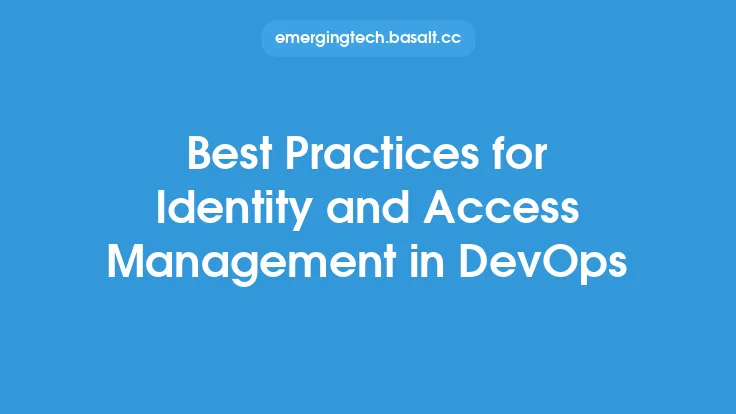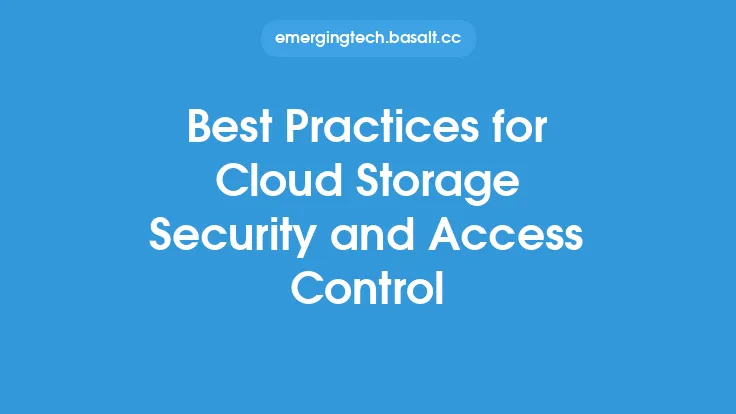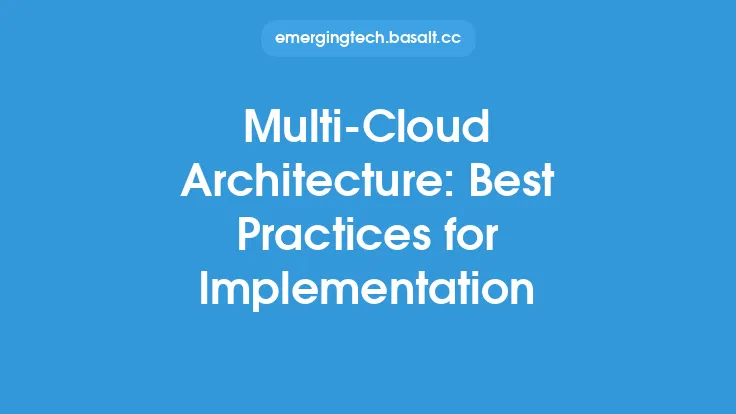As more organizations move their data and applications to the cloud, the importance of data encryption has never been more critical. Cloud computing offers numerous benefits, including scalability, flexibility, and cost savings, but it also introduces new security risks. One of the most effective ways to protect sensitive data in the cloud is through encryption. In this article, we will delve into the best practices and considerations for data encryption in the cloud, providing a comprehensive guide for organizations to ensure the confidentiality, integrity, and availability of their data.
Introduction to Data Encryption
Data encryption is the process of converting plaintext data into unreadable ciphertext to prevent unauthorized access. In the cloud, encryption is essential to protect data both in transit and at rest. There are several types of encryption, including symmetric, asymmetric, and hash-based encryption. Symmetric encryption uses the same key for encryption and decryption, while asymmetric encryption uses a pair of keys: a public key for encryption and a private key for decryption. Hash-based encryption uses a one-way function to create a fixed-size string of characters, known as a message digest, from variable-size input data.
Benefits of Data Encryption in the Cloud
Data encryption in the cloud offers numerous benefits, including:
- Confidentiality: Encryption ensures that even if unauthorized parties gain access to the data, they will not be able to read or exploit it.
- Compliance: Encryption is a requirement for many regulatory frameworks, such as PCI-DSS, HIPAA, and GDPR.
- Data sovereignty: Encryption helps organizations maintain control over their data, even when it is stored in a cloud environment.
- Risk reduction: Encryption reduces the risk of data breaches and cyber attacks, which can have devastating consequences for organizations.
Best Practices for Data Encryption in the Cloud
To ensure effective data encryption in the cloud, organizations should follow these best practices:
- Use end-to-end encryption: Encrypt data both in transit and at rest to ensure that it is protected throughout its entire lifecycle.
- Use secure encryption protocols: Use secure encryption protocols, such as TLS and SSL, to protect data in transit.
- Use strong encryption algorithms: Use strong encryption algorithms, such as AES and RSA, to protect data at rest.
- Manage encryption keys securely: Use secure key management practices, such as key rotation and revocation, to ensure that encryption keys are protected.
- Monitor and audit encryption: Regularly monitor and audit encryption to ensure that it is working effectively and that there are no vulnerabilities or weaknesses.
Considerations for Data Encryption in the Cloud
When implementing data encryption in the cloud, organizations should consider the following factors:
- Cloud service provider (CSP) encryption: Many CSPs offer encryption services, but organizations should carefully evaluate these services to ensure they meet their security requirements.
- Key management: Organizations should consider who will manage encryption keys and how they will be stored and protected.
- Data classification: Organizations should classify their data based on its sensitivity and importance, and apply appropriate encryption controls.
- Compliance: Organizations should ensure that their encryption practices comply with relevant regulatory frameworks and standards.
- Performance: Encryption can impact performance, so organizations should carefully evaluate the impact of encryption on their cloud-based applications and services.
Cloud Encryption Technologies
There are several cloud encryption technologies available, including:
- Server-side encryption: This involves encrypting data on the cloud provider's servers before it is stored.
- Client-side encryption: This involves encrypting data on the client-side before it is transmitted to the cloud.
- Gateway-based encryption: This involves using a gateway to encrypt data as it is transmitted to the cloud.
- Homomorphic encryption: This involves encrypting data in a way that allows it to be processed and analyzed without decrypting it first.
Challenges and Limitations of Data Encryption in the Cloud
While data encryption is an effective way to protect sensitive data in the cloud, there are several challenges and limitations to consider:
- Key management: Managing encryption keys can be complex and time-consuming, especially in large-scale cloud environments.
- Performance: Encryption can impact performance, especially if it is not implemented efficiently.
- Interoperability: Different cloud providers and applications may use different encryption protocols and algorithms, which can create interoperability challenges.
- Regulatory compliance: Ensuring that encryption practices comply with relevant regulatory frameworks and standards can be complex and time-consuming.
Future of Data Encryption in the Cloud
The future of data encryption in the cloud is likely to be shaped by several trends and technologies, including:
- Quantum computing: The advent of quantum computing is likely to require new encryption algorithms and protocols that are resistant to quantum attacks.
- Artificial intelligence: AI and machine learning are likely to play a larger role in encryption, especially in areas such as key management and threat detection.
- Cloud-native encryption: Cloud-native encryption technologies, such as serverless encryption and cloud-based key management, are likely to become more prevalent.
- Regulatory compliance: Regulatory frameworks and standards are likely to continue to evolve, requiring organizations to adapt their encryption practices to ensure compliance.
Conclusion
Data encryption is a critical component of cloud security, and organizations should prioritize it to protect their sensitive data. By following best practices, considering key factors, and staying up-to-date with the latest technologies and trends, organizations can ensure the confidentiality, integrity, and availability of their data in the cloud. As the cloud landscape continues to evolve, it is essential for organizations to stay vigilant and adapt their encryption practices to meet the changing security requirements of the cloud.





